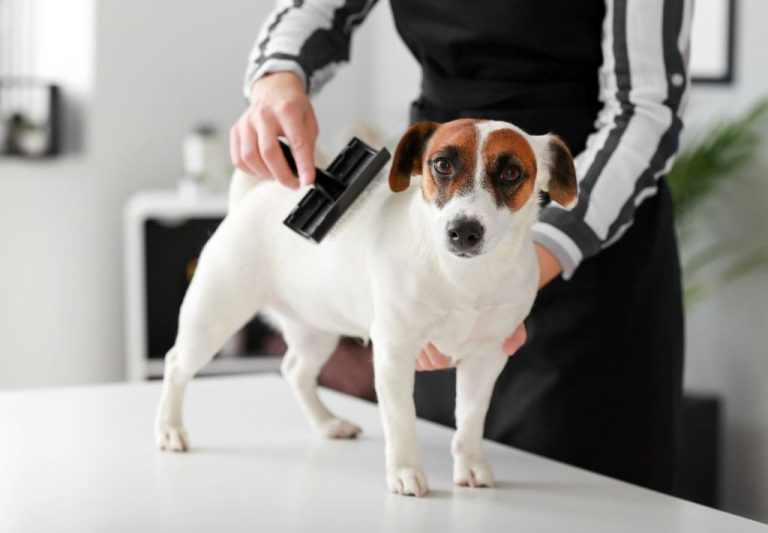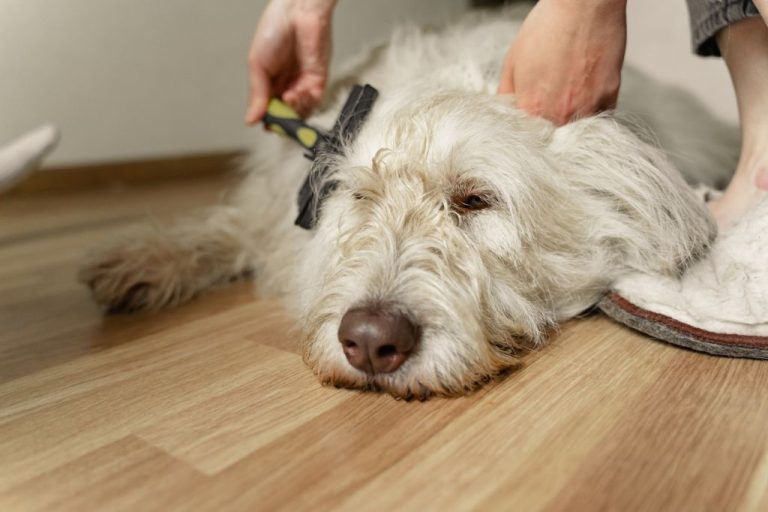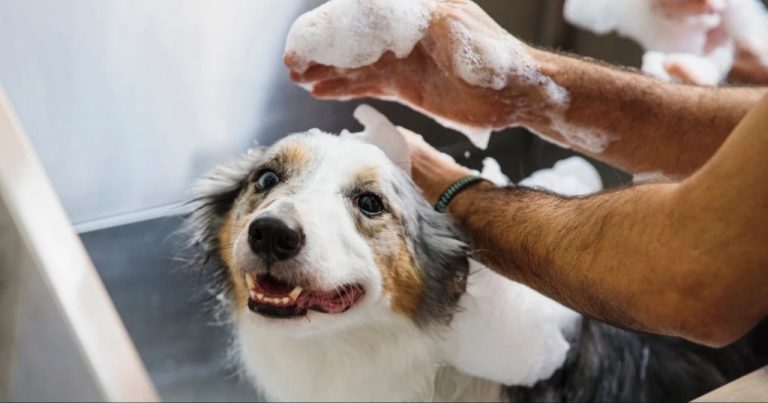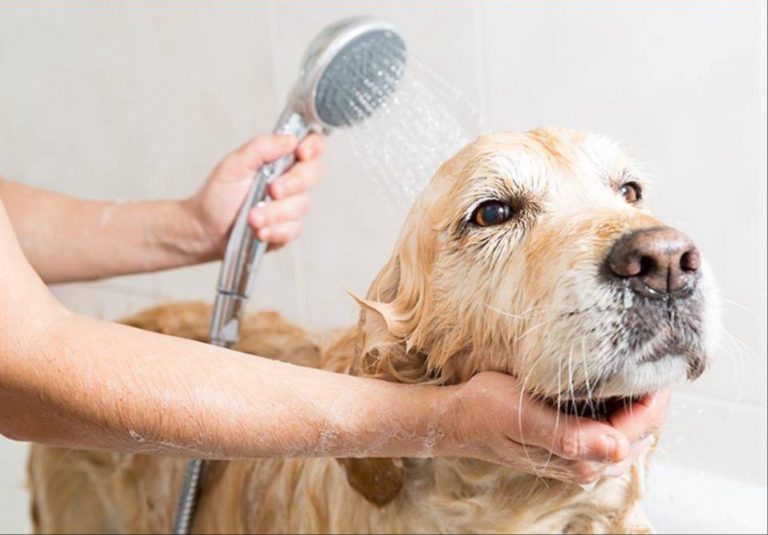Hygiene Tips For Senior Dogs: Special Considerations For Aging Pets
As dogs age, their bodies go through many changes that can affect their hygiene needs and care. Senior dogs, generally defined as those over 7 years old, require some special considerations when it comes to maintaining cleanliness and health.
Some of the key aging changes that impact hygiene include decreased mobility and flexibility making it difficult to groom themselves, dental issues like periodontal disease, changes in skin and coat thickness, urinary incontinence, and decreased tear production leading to eye issues.
Proper hygiene care for senior dogs is important for their health, comfort, and quality of life. An aging dog may need more assistance with bathing, dental care, nail trimming, ear cleaning, grooming, and monitoring for signs of infection or illness.
This article will provide tips and advice for handling the hygiene needs of senior dogs.
Dental Care
Dental health is extremely important for senior dogs. According to the VCA Animal Hospitals, plaque and tartar buildup on the teeth can lead to periodontal disease, a bacterial infection which can spread to other parts of the body and negatively impact the heart, liver and kidneys [1]. Brushing your dog’s teeth regularly can help prevent this.
It is recommended to brush your senior dog’s teeth at least 2-3 times per week [2]. Use a soft bristle toothbrush and dog-safe toothpaste. Gently brush in circular motions to remove plaque. Make sure to brush all surfaces of the teeth.
Even with regular brushing at home, it is still recommended to have your veterinarian perform professional dental cleanings for your senior dog annually [3]. This allows the vet to scale plaque from below the gumline and polish the teeth, which can’t be done sufficiently at home.
Bathing
Bathing frequency for senior dogs depends on factors like coat type, skin sensitivity, and incontinence issues. According to the American Kennel Club, healthy dogs with normal coats only need bathing every 2-3 months. However, senior dogs may need more frequent baths for medical reasons.
Incontinence can cause unpleasant odors and irritation, so gentle bathing 1-2 times per week may help keep your senior dog comfortable and clean. Short-haired dogs tend to need baths less often than long-haired dogs prone to matting and tangles. Be mindful of skin sensitivity as elderly dogs are prone to dry skin. Use a moisturizing shampoo and avoid excessively hot water.
According to Dogtime, bath time is a good opportunity to check for lumps, sore spots, or changes in skin condition. Avoid getting water in your senior dog’s ears. Dry them gently but thoroughly, since dampness can lead to ear infections. Trim excess fur around the ears with blunt scissors to improve airflow.
Brushing your senior dog’s coat before bathing can help loosen dirt and minimize tangles. Use a non-slip bath mat for safety. Always reward and praise your senior dog throughout the process so they associate bath time with a positive experience.
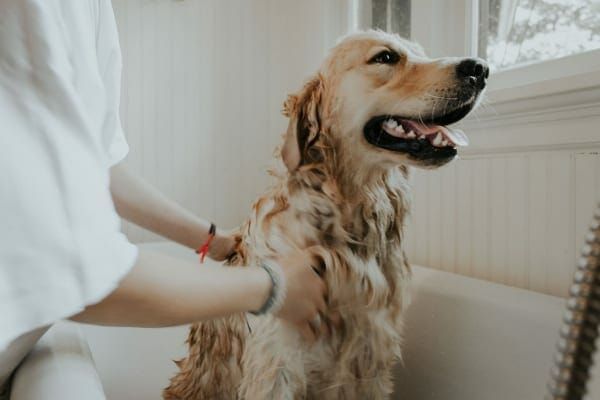
Skin and Coat
As dogs age, their skin and coat can undergo several changes. Many senior dogs develop dry, flaky skin and dull, brittle coats. It’s important to help moisturize your older dog’s skin and make their coat shiny and healthy.
Natural oils in a dog’s skin often decrease with age. You may notice your senior dog’s coat is drier and less glossy. Their skin may also become irritated more easily. Adding a fish oil or flaxseed supplement to their diet can help restore shine and moisture. Groom your senior dog regularly with a soft brush to distribute oils and keep their coat healthy. Use gentle shampoos made for dry skin. Consider mixing in a moisturizing conditioner.
Be sure to check your older dog’s skin during grooming. Redness, flaking, or irritation may indicate a skin issue needing veterinary attention. Skin infections and parasites can cause discomfort. Certain supplements can promote skin and coat health. Talk to your vet about options for your aging dog.
With attentive care and grooming, you can help your senior dog maintain soft skin and a lustrous coat even as they age.
Ears
As dogs age, their ear canals tend to narrow and produce less ear wax. This makes them more prone to developing ear infections. It’s important to regularly check your senior dog’s ears for signs of infection such as odor, redness, swelling, discharge, scratching, head shaking, or yelping when the ears are touched.
Some tips for monitoring your senior dog’s ears include:
- Look inside the ears weekly for any signs of infection
- Gently wipe inside the ears with a cotton ball to remove any debris or buildup
- Don’t insert anything into the ear canal
- If you notice signs of an infection, contact your vet right away as untreated infections can spread and cause permanent damage
With proactive monitoring and care, many ear issues in aging dogs can be caught early and treated effectively. Be alert for any changes and don’t hesitate to reach out to your veterinarian if you have any concerns about your senior dog’s ears.
Eyes
As dogs age, they may develop changes in their eyes that require special care and attention. Senior dogs are at higher risk for conditions like cataracts, glaucoma, and retinal disease, according to the ASPCA (https://pawsafe.com/blogs/eye-care/eye-care-for-dogs).
One of the most common age-related eye issues in senior dogs is nuclear sclerosis, which causes the lens of the eye to become cloudy. This can lead to blurred vision but is not painful. There is no treatment, but regular eye exams can monitor changes (https://www.rover.com/blog/reviews/dog-eye-gunk/).
Keeping senior dogs’ eyes clean is an important part of eye care. Gently wiping away discharge daily using a pet-safe eye wipe can help prevent infection. There are also pet eye drops that can relieve dryness and irritation (https://dogquality.com/blogs/senior-dog-blog/eye-health-and-the-senior-dog).
Signs of eye problems like excessive tearing, redness, swelling, or discharge warrant a veterinarian visit. With prompt treatment, many senior eye conditions can be managed to prevent loss of vision.
Nails
As dogs age, their nails may become thicker and more brittle. This can make trimming more difficult. It’s important to trim senior dogs’ nails regularly to keep them from becoming overgrown and causing discomfort or injury.
While on average most dogs will need to have their nails trimmed every 1-2 months, it can be more frequently – even as often as once per week – for senior dogs. According to https://topdoghealth.com/how-often-to-cut-senior-dogs-nails/, senior dogs’ nails grow faster due to less activity. Keeping nails short will prevent cracking and splitting.
Get in the habit of checking and trimming a small amount of nail every week or two. Use proper trimmers designed for dogs. Take extra caution if the nails are dark or you cannot see the quick. Only trim a small amount at a time to avoid hitting the quick, which will be painful and cause bleeding. Go slowly and have styptic powder on hand. Make nail trims relaxing with praise and treats.
Incontinence
Incontinence is a common issue for aging dogs as their bladder muscles weaken and they lose control of their bowel movements. There are a few key causes of incontinence in senior dogs:
- Hormone-responsive incontinence – declining estrogen levels can lead to a loss of bladder control in spayed female dogs
- Anatomic abnormalities – issues with the bladder, urethra or sphincter muscles can cause incontinence
- Urinary tract infections – UTIs irritate the bladder and cause frequent urination
- Cognitive dysfunction – some senior dogs becomes disoriented and forget they need to go out
There are several solutions to help manage urinary and fecal incontinence in older dogs:
- Take your dog out more frequently, every 2-3 hours if needed
- Use absorbent bedding and waterproof covers to limit mess
- Feed scheduled meals instead of free feeding to regulate bowel movements
- Try medications prescribed by your vet to strengthen bladder muscles or control hormones
- Consider doggy diapers or belly bands to catch leaks
With some adjustments, incontinence can be managed to keep senior dogs comfortable and clean in their golden years. As the ASPCA notes, “Incontinence is a treatable condition, not a death sentence. Don’t assume that euthanasia is your only option.” (Source)
Grooming
Regular grooming is essential for senior dogs to keep their coat clean, remove mats, circulate skin oils, and more. It’s best to maintain a regular schedule to keep their coat in order rather than waiting until it’s matted or overly dirty. Be gentle and take breaks often, as older dogs may be sensitive or unable to stand for long periods [1].
Focus grooming on areas prone to matting like behind the ears, armpits, and hind legs. Use a slicker brush and metal comb to gently work through knots rather than pulling. Try to brush small sections at a time. Make grooming a relaxing experience by giving praise, treats, and gentle massages [2].
Nail trimming should be done regularly as overgrown nails can cause pain and mobility issues. Introduce nail clipping slowly with positive reinforcement if your dog is sensitive. File nails if clipping is stressful. Baths can be done less frequently for older dogs, focusing on dirty areas as needed. Use gentle shampoo and thoroughly dry your dog afterwards.
Conclusion
As dogs age, their hygiene needs change and require some additional considerations. Regular dental care, bathing, grooming, and monitoring of eyes, ears, skin, nails, and continence are essential for keeping senior dogs clean, comfortable, and healthy. Be gentle and patient when handling aging pets, and adjust frequency and methods based on their needs. With some minor adaptations, you can continue providing excellent hygiene care for your senior dog.
The main hygiene considerations for senior dogs include:
- Daily dental care to prevent plaque buildup and infections.
- Less frequent but gentle bathing to avoid drying out skin.
- Regular nail trims to accommodate mobility issues.
- Monitoring ears and eyes for signs of infection or irritation.
- Keeping coat well-groomed to prevent matting or skin problems.
- Gently cleaning any soiled areas from incontinence.
- Adjusting routine based on health issues like arthritis.
While caring for an aging dog presents some new challenges, remembering to be patient and adapting hygiene habits can help keep senior pets clean, healthy, and comfortable. With some minor changes, you can continue providing excellent care as your dog gets older.


